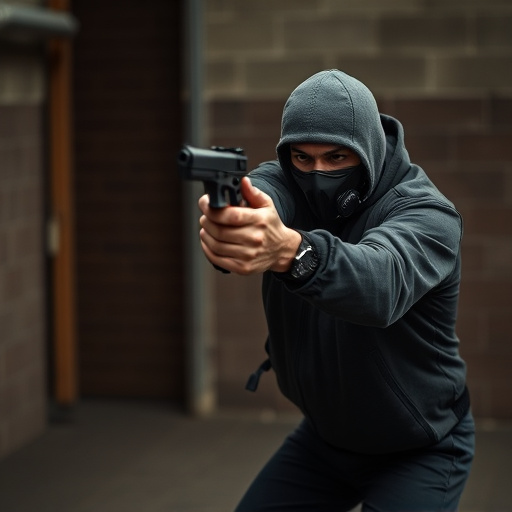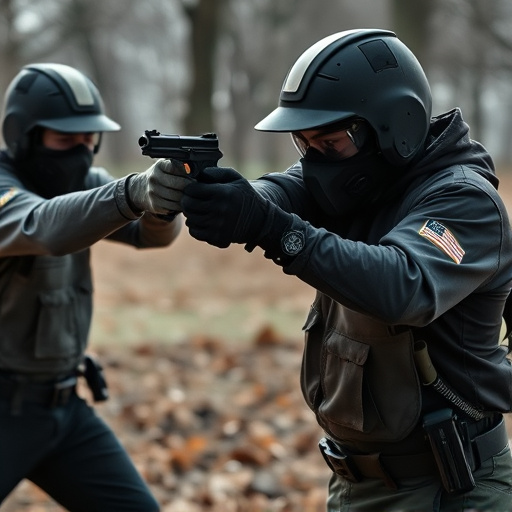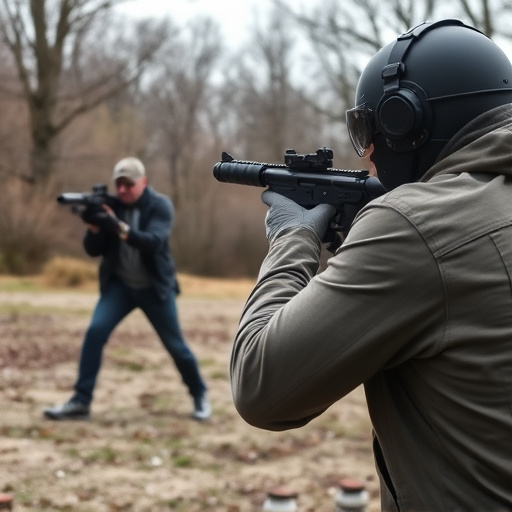Compact stun guns designed for purse carry have gained popularity as a discreet and powerful solution for women's personal safety. The market has responded with effective devices, but detecting these concealed weapons presents challenges due to their non-metallic materials and subtle designs. Current security technologies like metal detectors, thermal imaging, and X-ray scanners are ineffective or disruptive. Balancing personal safety and privacy is crucial; developing discreet yet effective detection methods for compact stun guns is essential to cater to the growing demand without infringing on individual rights.
In today’s world, personal safety is a paramount concern. The rise of compact stun guns designed for everyday carry has empowered individuals to protect themselves discreetly. However, this trend raises significant detection challenges, especially in public spaces where many facilities have security measures in place to identify concealed weapons. This article explores the balance between personal safety and privacy concerns, delving into the issues surrounding the detection of compact stun guns—a popular choice for purse carry.
- The Rise of Compact Stun Guns for Everyday Carry
- Potential Challenges: Detecting Concealed Stun Guns
- Balancing Personal Safety and Privacy Concerns
The Rise of Compact Stun Guns for Everyday Carry

In recent years, there’s been a notable trend in self-defense weaponry: the rise of compact stun guns designed for everyday carry. These innovative devices offer a discreet and powerful solution for individuals seeking personal safety, especially women who often carry them in purses for easy access. The compact size allows for effortless concealment, ensuring users can feel secure while going about their daily routines.
The market has responded to this growing demand by producing stun guns that are not only small but also highly effective. These gadgets pack a punch, delivering powerful jolts that can incapacitate an attacker, providing crucial time for escape. Their lightweight construction and sleek designs make them ideal for discreet carry without drawing unwanted attention, making them a popular choice for those seeking a proactive approach to personal safety.
Potential Challenges: Detecting Concealed Stun Guns

Detecting concealed stun guns presents unique challenges, particularly in public spaces where they can be easily hidden and accessed. Traditional metal detectors are ineffective against non-metallic devices like modern stun guns, which often incorporate plastic or composite materials for concealment. This is especially problematic considering the prevalence of compact stun guns designed for purse carry—a popular choice among women who prioritize personal safety.
Furthermore, the small size and subtle design of these stun guns make them nearly indistinguishable from everyday items, making their presence difficult to discern without specialized equipment. Even with advanced technology like thermal imaging or X-ray scanners, identifying a concealed stun gun remains a complex task due to its ability to blend into one’s belongings and the need for non-intrusive security measures in public areas.
Balancing Personal Safety and Privacy Concerns

Personal safety is a paramount concern in today’s world, and concealed stun gun detection technologies aim to address a growing need for self-defense options. However, this raises important privacy questions, especially regarding compact stun guns designed for purse carry. These tiny devices, often no bigger than a smartphone, offer women a discreet way to protect themselves, but they also spark debates about the potential for misuse and over-surveillance.
Balancing personal safety and privacy is delicate. On one hand, it’s crucial to ensure that individuals carrying such stun guns are genuine threats to their own well-being. On the other hand, widespread detection technologies could lead to a culture of constant surveillance, infringing on citizens’ rights to privacy. The challenge lies in developing detection methods that are both effective and respectful of individual freedoms, especially when it comes to compact self-defense tools intended for personal use.
As the popularity of compact stun guns for everyday carry grows, addressing detection concerns becomes increasingly vital. Balancing personal safety and privacy is a delicate act; however, advancements in technology offer hope for more effective concealed weapon detection methods. By staying informed about the latest developments and advocating for responsible ownership practices, individuals can ensure their safety while respecting privacy rights. The ongoing dialogue surrounding compact stun guns and their detection will ultimately shape public policies, fostering a safer environment for all.
